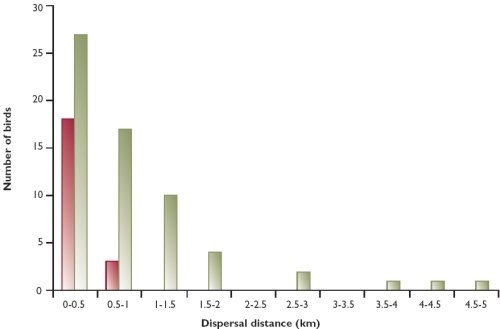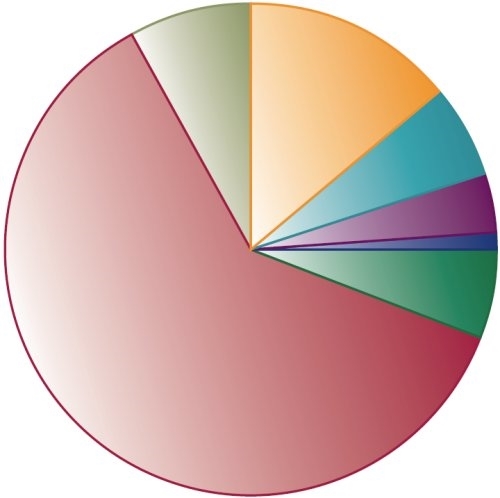Key finding
Juvenile dispersal, defined as the movement between the place of birth and place of breeding, is an important process in understanding populations. It can influence the growth rates and spread of populations, their gene flow and disease transmission.
To understand dispersal in red grouse, we caught 146 juveniles over three years and fitted each bird with a radio collar. Dispersal distances were defined as the straight line distance between the place where caught as a juvenile in summer and the centre of the home range in the following spring (or nest sites in the case of females). The timing of dispersal was defined as the mid-point between the date of leaving the natal home range and the date of settling in the territory where they bred.
Figure 1: The dispersal distances of juvenile male and female red grouse 1999-2001 (number of grouse = 84)

 |
Cocks |
 |
Hens |
Dispersal began in late September and finished by November. Females dispersed on average 861 metres (ranging from 50 metres to 4,660 metres), which was considerably further than males, which moved only 343 metres (ranging from 90 metres to 660 metres) from their place of birth (see Figure 1). Movements were unrelated to either summer or spring settling densities.
The main cause of mortality through the study was shooting, which accounted for 61% of all deaths (see Figure 2). Losses due to strongylosis were low as the population was in a building phase. These losses would have been higher in 2005, when strongylosis caused a loss of 79% between spring and summer counts.
Figure 2: Causes of mortality of 121 red grouse on the North Pennines study moors

 |
Stoats (14%) |
 |
Peregrines (6%) |
 |
Foxes (4%) |
 |
Badgers (1%) |
 |
Death through other causes (6%) |
 |
Shooting (61%) |
 |
Unknown cause of death (8%) |
Juveniles made up 74% of the shooting bag and overall shooting removed, on average, 41% of the summer population, but up to a maximum of 66%. This accounted for, on average, 83% of the over-winter loss. We found that adult grouse hosted 10 times higher parasite burdens than the juveniles.
This research led to a further PhD study where Nils Bunnefeld investigated the effect of grouse age and driven shooting on grouse populations.
References
- Warren, P.K. & Baines, D. (2007). Dispersal distances of juvenile radiotagged Red Grouse Lagopus lagopus scoticus on moors in northern England. Ibis, 149: 758-762.